Multitheism
Multitheism
1. The existence of multiple forms of theism, as in a society.
2. Polytheism.

More Posts from Per-spells and Others
The Great Goddess Hecate (Hekate)

Who is Hecate? She is the Goddess of Witchcraft, Necromancy, Ghosts, Magic, and, in some instances, the Night, Darkness, The Mist, and Moon. For some She is also the goddess of motherhood, protection, and the sea. She is a Hellenic deity, born of the Titans Asteria and Perses. There’s a few beliefs circling around Her being a crone goddess or a Triple Goddess, but those are modern and neopagan beliefs—which She predates. I also consider Her to be a part of the Chthonic deities.
Symbology: Black dogs, Wolves, Keys, Torches, Flames, Torches, Crossroads, Serpents, Daggers, Birds of Prey (crows, ravens, owls), the Moon, witchcraft tools (such as cauldrons, tarot, athames)
Offerings & Devotional Acts for Her:
Figurines of any of Her symbols
keys, skeleton keys, lockets
fire witchcraft and candles, flames, matchsticks
dedicating any lunar or symbolic jewelry to Her
black/dark crystals such as obsidian and onyx
nocturnal animal imagery
black/cool colored glitter
baneful/poisonous herbs and plants
pomegranates/berries (She seems to really like blackberries)
dark blend wines
honey, cinnamon, poppy seeds, chocolates (dark)
mugwort, lavender, roses, jasmine, dragon’s blood
bones and feathers from birds of prey (please check your local laws about obtaining these)
pinpricks of blood (please DO NOT attempt this if you struggle with self harm/etc, blood magic is particularly strong and isn’t for everyone. She will understand if you cannot offer that to her).
Taking midnight walks, setting up altars and rituals at crossroads, paying respects to the dead and practicing your craft in a cemetery
Any playlists, poems, literature, whether it be your own or just a piece you associate with Her, also make wonderful offerings.
Lunar Influences & Connections: Reaching out to Hecate tends to work best at night, and really any time the moon is at it’s peak. The Witching Hours, midnight to 3A.M., during strong lunar influences (blue moons, blood moons, eclipses, new moons, etc) all hold strong bonds with Hecate. Also, any time it is particularly foggy or your surroundings are covered in a mist is a good time to try to connect with Her.
Disclaimer: These are correspondences that have been gathered through my personal experiences working through my craft with Her. If you find She responds better to different offerings/during different times, by all means, stick to it! Your bond with Her is your own and should be cultivated in whichever way works best for you and Her. Thank You!
Frozen: Ice on Earth and Well Beyond

Icy Hearts: A heart-shaped calving front of a glacier in Greenland (left) and Pluto’s frozen plains (right). Credits: NASA/Maria-Jose Viñas and NASA/APL/SwRI
From deep below the soil at Earth’s polar regions to Pluto’s frozen heart, ice exists all over the solar system…and beyond. From right here on our home planet to moons and planets millions of miles away, we’re exploring ice and watching how it changes. Here’s 10 things to know:
1. Earth’s Changing Ice Sheets

An Antarctic ice sheet. Credit: NASA
Ice sheets are massive expanses of ice that stay frozen from year to year and cover more than 6 million square miles. On Earth, ice sheets extend across most of Greenland and Antarctica. These two ice sheets contain more than 99 percent of the planet’s freshwater ice. However, our ice sheets are sensitive to the changing climate.
Data from our GRACE satellites show that the land ice sheets in both Antarctica and Greenland have been losing mass since at least 2002, and the speed at which they’re losing mass is accelerating.
2. Sea Ice at Earth’s Poles

Earth’s polar oceans are covered by stretches of ice that freezes and melts with the seasons and moves with the wind and ocean currents. During the autumn and winter, the sea ice grows until it reaches an annual maximum extent, and then melts back to an annual minimum at the end of summer. Sea ice plays a crucial role in regulating climate – it’s much more reflective than the dark ocean water, reflecting up to 70 percent of sunlight back into space; in contrast, the ocean reflects only about 7 percent of the sunlight that reaches it. Sea ice also acts like an insulating blanket on top of the polar oceans, keeping the polar wintertime oceans warm and the atmosphere cool.
Some Arctic sea ice has survived multiple years of summer melt, but our research indicates there’s less and less of this older ice each year. The maximum and minimum extents are shrinking, too. Summertime sea ice in the Arctic Ocean now routinely covers about 30-40 percent less area than it did in the late 1970s, when near-continuous satellite observations began. These changes in sea ice conditions enhance the rate of warming in the Arctic, already in progress as more sunlight is absorbed by the ocean and more heat is put into the atmosphere from the ocean, all of which may ultimately affect global weather patterns.
3. Snow Cover on Earth

Snow extends the cryosphere from the poles and into more temperate regions.
Snow and ice cover most of Earth’s polar regions throughout the year, but the coverage at lower latitudes depends on the season and elevation. High-elevation landscapes such as the Tibetan Plateau and the Andes and Rocky Mountains maintain some snow cover almost year-round. In the Northern Hemisphere, snow cover is more variable and extensive than in the Southern Hemisphere.
Snow cover the most reflective surface on Earth and works like sea ice to help cool our climate. As it melts with the seasons, it provides drinking water to communities around the planet.
4. Permafrost on Earth

Tundra polygons on Alaska’s North Slope. As permafrost thaws, this area is likely to be a source of atmospheric carbon before 2100. Credit: NASA/JPL-Caltech/Charles Miller
Permafrost is soil that stays frozen solid for at least two years in a row. It occurs in the Arctic, Antarctic and high in the mountains, even in some tropical latitudes. The Arctic’s frozen layer of soil can extend more than 200 feet below the surface. It acts like cold storage for dead organic matter – plants and animals.
In parts of the Arctic, permafrost is thawing, which makes the ground wobbly and unstable and can also release those organic materials from their icy storage. As the permafrost thaws, tiny microbes in the soil wake back up and begin digesting these newly accessible organic materials, releasing carbon dioxide and methane, two greenhouse gases, into the atmosphere.
Two campaigns, CARVE and ABoVE, study Arctic permafrost and its potential effects on the climate as it thaws.
5. Glaciers on the Move

Did you know glaciers are constantly moving? The masses of ice act like slow-motion rivers, flowing under their own weight. Glaciers are formed by falling snow that accumulates over time and the slow, steady creep of flowing ice. About 10 percent of land area on Earth is covered with glacial ice, in Greenland, Antarctica and high in mountain ranges; glaciers store much of the world’s freshwater.
Our satellites and airplanes have a bird’s eye view of these glaciers and have watched the ice thin and their flows accelerate, dumping more freshwater ice into the ocean, raising sea level.
6. Pluto’s Icy Heart

The nitrogen ice glaciers on Pluto appear to carry an intriguing cargo: numerous, isolated hills that may be fragments of water ice from Pluto’s surrounding uplands. NASA/Johns Hopkins University Applied Physics Laboratory/Southwest Research Institute
Pluto’s most famous feature – that heart! – is stone cold. First spotted by our New Horizons spacecraft in 2015, the heart’s western lobe, officially named Sputnik Planitia, is a deep basin containing three kinds of ices – frozen nitrogen, methane and carbon monoxide.
Models of Pluto’s temperatures show that, due the dwarf planet’s extreme tilt (119 degrees compared to Earth’s 23 degrees), over the course of its 248-year orbit, the latitudes near 30 degrees north and south are the coldest places – far colder than the poles. Ice would have naturally formed around these latitudes, including at the center of Sputnik Planitia.
New Horizons also saw strange ice formations resembling giant knife blades. This “bladed terrain” contains structures as tall as skyscrapers and made almost entirely of methane ice, likely formed as erosion wore away their surfaces, leaving dramatic crests and sharp divides. Similar structures can be found in high-altitude snowfields along Earth’s equator, though on a very different scale.
7. Polar Ice on Mars

This image, combining data from two instruments aboard our Mars Global Surveyor, depicts an orbital view of the north polar region of Mars. Credit: NASA/JPL-Caltech/MSSS
Mars has bright polar caps of ice easily visible from telescopes on Earth. A seasonal cover of carbon dioxide ice and snow advances and retreats over the poles during the Martian year, much like snow cover on Earth.

This animation shows a side-by-side comparison of CO2 ice at the north (left) and south (right) Martian poles over the course of a typical year (two Earth years). This simulation isn’t based on photos; instead, the data used to create it came from two infrared instruments capable of studying the poles even when they’re in complete darkness. This data were collected by our Mars Reconnaissance Orbiter, and Mars Global Surveyor. Credit: NASA/JPL-Caltech
During summertime in the planet’s north, the remaining northern polar cap is all water ice; the southern cap is water ice as well, but remains covered by a relatively thin layer of carbon dioxide ice even in summertime.
Scientists using radar data from our Mars Reconnaissance Orbiter found a record of the most recent Martian ice age in the planet’s north polar ice cap. Research indicates a glacial period ended there about 400,000 years ago. Understanding seasonal ice behavior on Mars helps scientists refine models of the Red Planet’s past and future climate.
8. Ice Feeds a Ring of Saturn

Wispy fingers of bright, icy material reach tens of thousands of kilometers outward from Saturn’s moon Enceladus into the E ring, while the moon’s active south polar jets continue to fire away. Credit: NASA/JPL/Space Science Institute
Saturn’s rings and many of its moons are composed of mostly water ice – and one of its moons is actually creating a ring. Enceladus, an icy Saturnian moon, is covered in “tiger stripes.” These long cracks at Enceladus’ South Pole are venting its liquid ocean into space and creating a cloud of fine ice particles over the moon’s South Pole. Those particles, in turn, form Saturn’s E ring, which spans from about 75,000 miles (120,000 kilometers) to about 260,000 miles (420,000 kilometers) above Saturn’s equator. Our Cassini spacecraft discovered this venting process and took high-resolution images of the system.

Jets of icy particles burst from Saturn’s moon Enceladus in this brief movie sequence of four images taken on Nov. 27, 2005. Credit: NASA/JPL/Space Science Institute
9. Ice Rafts on Europa

View of a small region of the thin, disrupted, ice crust in the Conamara region of Jupiter’s moon Europa showing the interplay of surface color with ice structures. Credit: NASA/JPL/University of Arizona
The icy surface of Jupiter’s moon Europa is crisscrossed by long fractures. During its flybys of Europa, our Galileo spacecraft observed icy domes and ridges, as well as disrupted terrain including crustal plates that are thought to have broken apart and “rafted” into new positions. An ocean with an estimated depth of 40 to 100 miles (60 to 150 kilometers) is believed to lie below that 10- to 15-mile-thick (15 to 25 km) shell of ice.
The rafts, strange pits and domes suggest that Europa’s surface ice could be slowly turning over due to heat from below. Our Europa Clipper mission, targeted to launch in 2022, will conduct detailed reconnaissance of Europa to see whether the icy moon could harbor conditions suitable for life.
10. Crater Ice on Our Moon

The image shows the distribution of surface ice at the Moon’s south pole (left) and north pole (right), detected by our Moon Mineralogy Mapper instrument. Credit: NASA
In the darkest and coldest parts of our Moon, scientists directly observed definitive evidence of water ice. These ice deposits are patchy and could be ancient. Most of the water ice lies inside the shadows of craters near the poles, where the warmest temperatures never reach above -250 degrees Fahrenheit. Because of the very small tilt of the Moon’s rotation axis, sunlight never reaches these regions.
A team of scientists used data from a our instrument on India’s Chandrayaan-1 spacecraft to identify specific signatures that definitively prove the water ice. The Moon Mineralogy Mapper not only picked up the reflective properties we’d expect from ice, but was able to directly measure the distinctive way its molecules absorb infrared light, so it can differentiate between liquid water or vapor and solid ice.
With enough ice sitting at the surface – within the top few millimeters – water would possibly be accessible as a resource for future expeditions to explore and even stay on the Moon, and potentially easier to access than the water detected beneath the Moon’s surface.
11. Bonus: Icy World Beyond Our Solar System!

With an estimated temperature of just 50K, OGLE-2005-BLG-390L b is the chilliest exoplanet yet discovered. Pictured here is an artist’s concept. Credit: NASA
OGLE-2005-BLG-390Lb, the icy exoplanet otherwise known as Hoth, orbits a star more than 20,000 light years away and close to the center of our Milky Way galaxy. It’s locked in the deepest of deep freezes, with a surface temperature estimated at minus 364 degrees Fahrenheit (minus 220 Celsius)!
Make sure to follow us on Tumblr for your regular dose of space: http://nasa.tumblr.com.

1- Hecate

1- Hecate
Greek Titan of Witches, Witchcraft, Sorcery, and Crossroads.
When I first began this project, I knew that I wanted to end with Hecate. She is simultaneously the final and the first, our alpha and omega of Witchcraft. She dominates popular witch lore, but you would never know it as she resides in the shadows, side plots, and brief mentions. Only when you seek her out does she reveal herself to you, lighting your path while casting shadows and ghosts. Many, if not all, modern Witches, Pagans, and Wiccans see Hecate as a Goddess of Witches, amongst other appropriate attributes, and continue her worship and reverence now several thousand years ongoing.
As is the case with most of Greek Mythology, Hecate has multiple origin myths and genealogies. This is most likely the result of her originating outside of the Greeks, and being adapted and merged with the existing pantheon. Most traditions have Hecate as the daughter of the Titans Perses, titan of destruction, and Asteria, titan of falling stars and nocturnal prophecy. Hecate was their only child, and was able to retain her powers post Zeus’ coup as she helped him fight the Giants. As child of Asteria, her grandmother was the Titan of the Moon, Phoebe, and her cousin was Olympian lunar all-star Artemis.
There are various stories in which Hecate plays a part. Her most notable and appropriate for this time of year, however, is her integral role in assisting Demeter’s search for her beloved daughter, Persephone. Upon Persephone’s decent into Hades, Hecate, through the light of her torches, helped Demeter discover her daughter in the underworld. As such, Hecate has become a chthonic Goddess, and Persephone’s yearly attendant and psychopomp to the underworld. Her position as gatekeeper and guide to Hades solidifies many of her numerous attributes.
Hecate is associated with ghosts, necromancy, and magic. She is identified with crossroads, torches, and dark hounds. She was a common household deity for the Athenian—her shrines placed in doorways and city gates to both protect from restless spirits and bestow blessings and safe passage. Her worship and cult was as extensive as her various attributes, with temples and shrines scattered across the Mediterranean. As a key figure in the Persephone saga, Hecate was integral in the ancient Eleusinian Mysteries, impacting secret societies and occult rituals to this day.
Out of all her characteristics, her association with the crossroads is perhaps the most pertinent to my series. Most often, we think of crossroads as the intersection of two roads, yielding four directions. This was not always the case, however, as it was more common to have a proverbial ‘fork in the road’, yielding three directions. This is the kind of crossroads in which Hecate resides. Her statues depict her in triplicity, forearms outstretched, holding torches, keys, serpents, daggers, etc. One face in each direction, Hecate is the arbiter of passages, and in this way is the consort of the God Hermes.
Hecate is one of the original Triple Goddesses of Witchcraft, if not the primordial one. Her triplicity has defined much of Modern Pagan theology, with her stance representing the three phases of the moon, Waxing, Full, and Waning (Maiden, Mother, Crone respectively). Her mythological genealogy as the granddaughter of Phoebe and cousin to Artemis has yielded Hecate as a Goddess of the Moon in her own right, most often known as the unseen phase of the moon, the New Moon (however she is just as often associated with all moon phases). In Greek/Roman Mythology, Hecate joins many lunar goddesses in addition to Phoebe and Artemis, including Selene and Diana. The five were often conflated, confused, and worshiped both in tandem and in conflict. This ever shifting, impossible to pin down, lunar association echos her transient nature of existing in the shadows.
Hecate is both mysterious and severe. Her face is hidden behind her torches, or on the dark side of the moon, however her presence is a constant. She is life, death, and rebirth. She is both light and dark magic. She was beloved in her association with rites of passage like childbirth, and feared in her role as Queen of Shades, present at the final rite of passage, death. Her nature has permeated my entire series in such a profound and indescribable way, I can only show you:
#93: Lilith— often worshiped by modern Pagans in tandem with Hecate #92: Circe: Daughter of Hecate #89, #54, #39: Bewitched: A common expression “For Hecate’s Sake!” Occurs throughout the show. #79: Aradia: Daughter of Lucifer and Diana. Often seen as the daughter of an amalgamated Diana-Hecate. #70: Medea: Priestess of Hecate #67: Charmed: The Halliwell Sisters: Appears in the episode “The Wedding from Hell” #56: Ceridwen: Often worshiped in tandem with Hecate as Dark Mothers by modern Pagans. . #52, #27: Practical Magic: The necromancy ritual the Owen’s Sisters perform, albeit pronounced incorrectly. “Black as night, erase death from our sight. White as light, Mighty Hecate make it right.” #10: Willow Rosenberg: Buffy the Vampire Slayer. Mentioned in several episodes and referred to as “Queen and Protectress of Witches.” #7: American Horror Story: Coven: Supreme Fiona Goode invokes Hecate “Come to me Hecate, Mother of Angels, Cosmic World Soul.” #5: The Weird Sisters: Macbeth: Hecate is their master
This list is pretty fitting for a Goddess whose name etymologically may mean “she that operates from afar.” She is seldom a central figure or even visible, however witches from the Owens to the Goodes, from Willow Rosenberg to Endora, invoke her name and ask for her spirit, guidance, and presence. Hecate, in many ways, is both the first witch, and the last. She is our alpha and omega. She is the embodiment of power and strength. As a Goddess of Witchcraft, she does not merely exist in the margins of society like the rest of us—She is the margin itself.
Hail Hecate.
“Hecate, Cerridwen. Dark Mother take us in. Hecate, Cerridwen. Let us be reborn.”



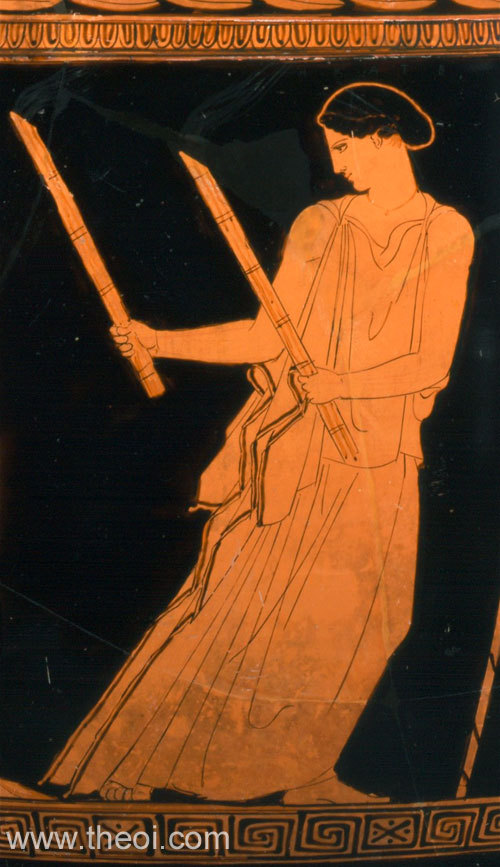

Greta
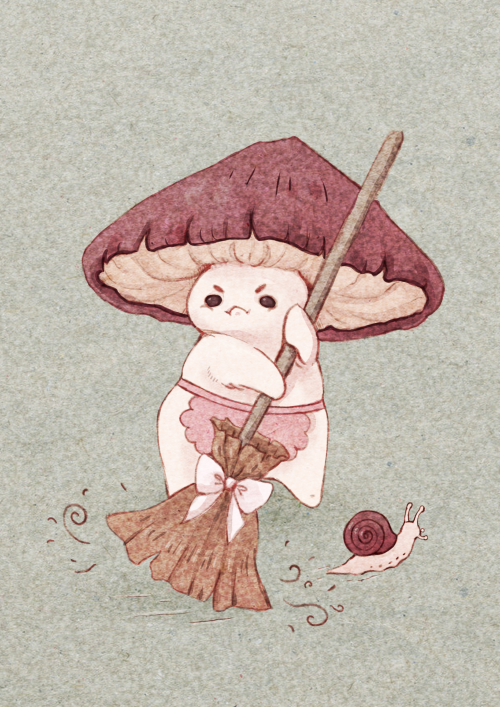
angy boi
Speed paint
Prints
I did my own pendulum table!
The zodiac signs are for decoration and to add power ^^✨
A little idea! You could make your own table with your pendulum colors inspiration ;) 💜


Where are you getting those textures??? They're so good ;_;
Thank you!! I have a sketchbook with greyish brown paper that has a lot of structure to it, so I scanned it, and it is my go to texture!

I also like adding a noise filter over my color layers, and I just play around with different settings and combinations until I find something I like! I usually set the blending mode to overlay, but if there are some really light areas I sometimes add some texture on a multiply layer on that specifik area!

Hope that answers your question! :)
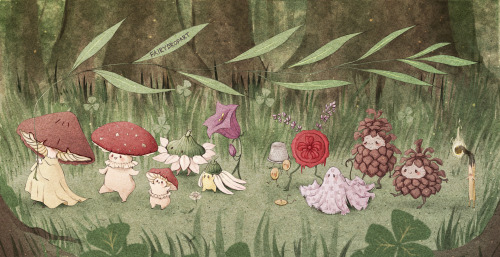
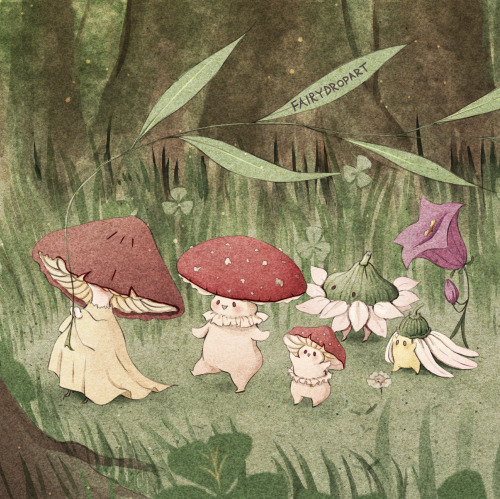
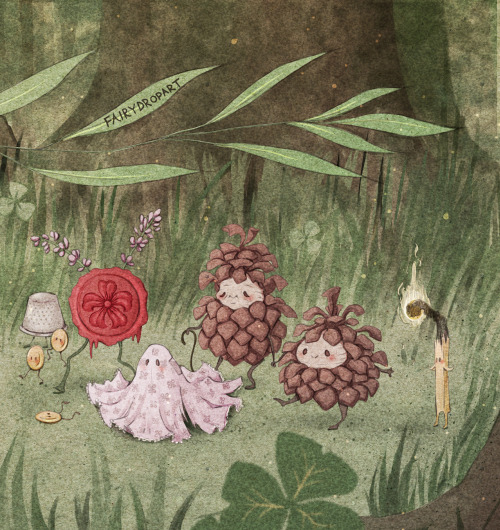
I got the opportunity to make an illustration for the game Wanderhome, a pastoral ttrpg! These little creatures are called the small and forgotten gods, and they can be found all around in the game’s world! Designing them was so much fun!

Warm up doodle based on an idea by my bestie!
-
 bloggerfowl liked this · 4 years ago
bloggerfowl liked this · 4 years ago -
 per-spells reblogged this · 4 years ago
per-spells reblogged this · 4 years ago
